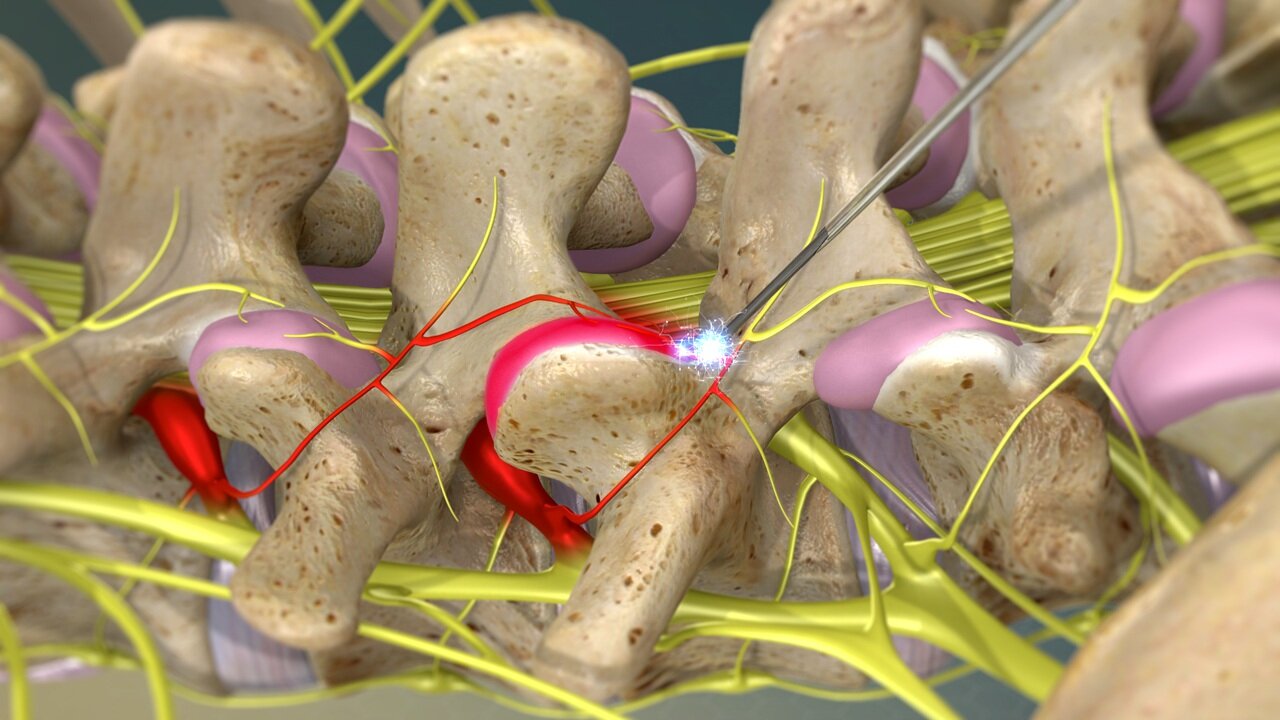Radiofrequency Ablation (RFA)
Radiofrequency or rhizotomy is a procedure that destroys problematic nerve roots that send pain signals to the brain. The candidates for this procedure are the patients who already underwent a series of successful nerve blocks that identified the source of pain. This procedure can effectively relieve chronic back pain and in some cases muscle spasms. For spinal joint pain, most common RFA procedure is the facet rhizotomy. A physician will use radiofrequency probe (ultra thin wire that is passed through a special needle) to destroy the nerves that are causing pain. The nerves will grow back over time and the patient might need to receive a treatment again within a year.
How Is This Procedure Performed?
The doctor uses an x-ray to guide the needle’s placement with the electrode. The doctor determines the nerve location and the spot is stimulated by a mild electrical current. You may notice some tingling or a little pressure during this part. The sensory nerves are deadened by the electrode which is heated. The procedure ends when the needle is removed and a bandage is placed on the injection site.
Radiofrequency Ablation Recovery Time
When your return home, you may notice some bruising, soreness, or swelling at the injection site. Most patients are able to go back to work and normal daily activities the day following a facet rhizotomy. Cold therapy (ice pack) or anti-inflammatory drugs can help reduce post-procedure symptoms. The healing process can take up to 2-4 weeks. As your nerves heal from this procedure, the pain will continue to improve. The maximum benefit from this procedure is typically experienced within 2 weeks after the procedure, and this typically lasts 8-12 months.
What should I expect during radiofrequency ablation?
Plan to check in 30 minutes prior to your scheduled appointment time. Depending on the case your provider places a tiny intravenous (IV) catheter in your arm or hand to administer light sedation and help you relax. ( We do not offer IV sedation currently at our office location, if you would like other options they can be discussed at your appointment.)
You then lie down on your stomach with a pillow beneath your hips or under your chest. Your provider cleans the treatment area and uses a thin needle to numb your skin.
They use X-ray guidance to identify specific tissues, place needles into such tissues, and emit radiofrequency energy to burn painful nerves. You might notice tingling, buzzing, or thumping sensations during the treatment.
Radiofrequency ablation often lasts about 30-45 minutes.
Side Effects & Risks
Radiofrequency ablation success rate is relatively high and procedure has a very low chance of complications. But there is always a chance of infection when a needle is used in a procedure. Some of the side effects include:
You may experience numbness or weakness in the arm or leg because of anesthetic you received could affect your nerves.
Blood pressure may drop and lead to dizziness.
You may notice a slight headache. Make sure you are drinking plenty of fluids and taking any needed pain medications.
You may feel some mild pain and discomfort where the injection was made. Apply ice to the site and take pain medications or anti-inflammatories.


